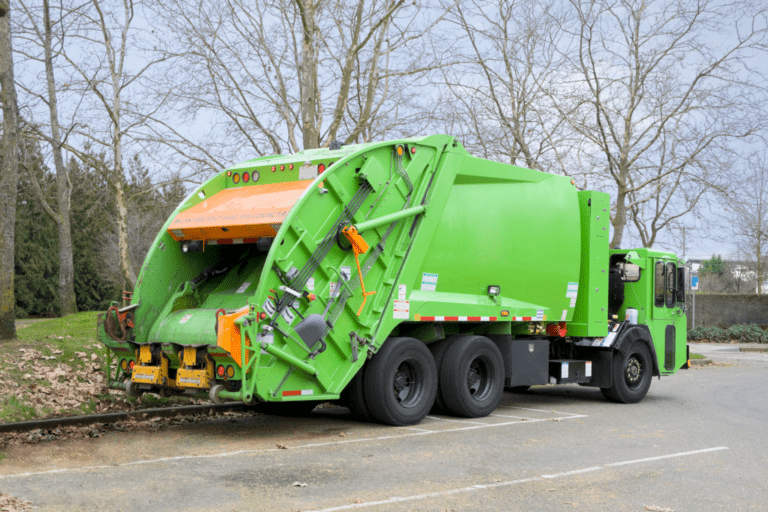If DVIRs are essential to your business like they are for many fleet vehicles, you know how important it is to get them right, and stay compliant with DOT regulations.
The act of filling out those daily DVIR (Driver Vehicle Inspection Report) forms looks a little different for many organizations. Most use paper, other organizations use spreadsheets, you may be using the electronic vehicle inspection functionality bundled with your ELD.
Electronic Logging Device (ELD) solutions may offer some form of hardwired ‘DVIR’ functionality (in the form of pass/fail), but should you be relying on it to stay compliant when drivers can’t get out and actually take photos or inspect anything with it?
In this post, we’ll break down what to keep in mind with filling out DVIR forms using an ELD for pre and post-trip inspections, and 5 potential problems to avoid in order for drivers to properly complete inspections.
What DVIR requirements should you be aware of?

While it may sound basic, an important first question to ask yourself is what your daily driver vehicle inspection report (DVIR) requirements actually are in your industry vertical.
Be sure to check out our blog post Electronic DVIR Minimum Requirements for an understanding of what type of baseline information required to include in your reports.
DOT requirements from the FMCSA
While qualifying as a Commercial Motor Vehicle (CMV) and receiving a DOT number is a starting point for this requirement, it’s important to understand that what’s actually needed can vary depending on the vertical and type of vehicles you operate. As a refresher, you can read through these FMCSA guidelines here that outlines §396.11 and read the code from the Electronic Code of Federal Regulations on what to keep in mind.
As an example, a passenger-carrying commercial motor vehicle (CMV) is not required to file a DVIR if there are no defects to report.
Each vehicle and industry vertical is different, so there will be different inspection items to include in the forms you use, depending on the type of vehicles in your fleet.
Refer to the FMCSA and local or state inspection guidelines
As it relates to these requirements, always be sure to refer to the FMCSA for guidance on what is required in an inspection. Even when using an ELD, you’ll want to make sure that you’re staying compliant by knowing what’s required each day for pre and post-trip inspections.
5 reasons why relying on an ELD for inspections can be problematic

When using or installing an ELD as part of the ELD mandate, the bundled DVIR functionality shouldn’t be overlooked, but taken seriously to ensure a proper inspection is actually taking place each time drivers begin and ends their day.
Here are 5 common reasons why using an ELD or electronic DVIR tool to complete your inspection reports correctly can be problematic or provide a false sense of security or compliance.
1. Drivers may not be performing a proper walk around inspection
To properly complete any inspection, a driver will obviously need to do a proper walk-around, taking photos, and do more than just thumb through a DVIR interface or check a few boxes.
What mechanisms are in place to ensure a proper inspection is being completed?
Since paper forms and ELD solutions alike can make the inspection process short, sweet (and oftentimes incomplete), it can be easy for drivers to treat them as a terms and conditions document, simply checking ‘Yes’ just to get on with their day.
The importance of photos
Taking photos is also a key point of concern, due to the fact that these ELD solutions often don’t encourage a walk around inspection where photos can be taken. This is a key point of difference for mobile solutions like Whip Around that focus on actual photo documentation of these critical inspection items.
These photos also play a key role in driver accountability, since damage can be referenced at any point in time and traced to a particular driver and inspection date.
Even with an ELD, problems can arise when important information isn’t collected or delivered to the right person, whether that’s a fleet manager to mechanic. Anyone involved should have access to view or approve inspection reports and resulting work orders whenever needed.
2. Lack of workflow customization
With some ELD solutions out there, the entire pre and post-trip inspection workflow isn’t as customizable as it should be. This may mean having to walk the entire vehicle multiple times to complete a list of inspection items in an alphabetical list.
For a proper walk around inspection, you really need a solution that will allow fleet managers to customize the inspection experience in a way that makes sense for the driver.
For example, you probably want to configure these inspection items in a logical way, so drivers only need to walk around the vehicle one time.
When on a tight schedule, breezing through a checklist of items is a common occurrence for many fleets when they aren’t configured in a way that makes sense.
Even when using inspection software, loopholes like accessing a photo gallery on a smartphone of previous pre-inspection photos is a big problem for vendors that don’t exclusively focus on inspections.
Dedicated inspection solutions like Whip Around actually blocks photo gallery access from occurring (for example), and focuses on what fleet managers actually want (or don’t want) their solution to give their drivers.
3. It begins and ends with a signature

With DOT compliance in mind, the problem with many ELD solutions on the market today is the process of gathering required sign-off or signatures.
It’s important that whenever faults are detected and work orders created, your mechanic signs off on repairs in a way that gives visibility to who needs it. Having drivers sign off on inspections, defects, and whenever repairs have been made is critical step in this process.
Closing this loop can be problematic with ELDs, since maintenance and repair work often relies on work order forms (or other software).
4. Lack of verification and communication
While it’s your driver’s responsibility to properly complete their daily pre and post-trip vehicle inspection forms, having access as a manager to the status of daily inspections is key for making sure inspections aren’t missed.
Practically speaking, there should be a line of communication between drivers and fleet managers whenever a pre or post-trip inspection is missed throughout the day.
If your solution doesn’t include the ability to proactively notify or message drivers or fleets managers on the status of inspections (or previous repairs), you may want to consider a more complete solution.
5. Lack of documentation
When it comes to putting in work orders, communication and documentation is key for fleet managers (and more importantly, mechanics) whenever faults are detected in a daily DVIR.
Any documented information resulting from a detected fault should be communicated clearly to all involved parties.
With many ELD solutions, maintenance and work orders are a missing piece (or an afterthought) of the inspection process that is critical to address in order to keep your fleet operating at full capacity at all times.
The bottom line: 3 steps to DVIR compliance
While your ELD may still be important for logs, it’s important to understand just how important the inspection process is when trying to stay compliant and maintaining your fleet. To wrap up, here are 3 questions to ask yourself about your current solution and process:
- Inspect: Can I ensure my drivers are actually inspecting the vehicle properly and signing off on corrected repairs when required?
- Verify: Does my solution give me checks and balances whenever an inspection is missed? Can I contact or message anyone I need to at any time?
- Document: Is maintenance and addressing faults an easy process or straightforward in regards to notes, and creating work orders?
Let Whip Around streamline your DVIRs

There’s really no excuse for a messy or incomplete inspection process, which is why it’s crucial to have a tool like Whip Around that can help prevent this from occurring in the first place.
As a manager or owner, it’s your responsibility to ensure compliance across your fleet. Among other benefits, Whip Around can help your team avoid heavy fines and violations by providing information many ELDs don’t focus on, like:
- The ability to take and enable photos at any point in the inspection process
- Driver and Mechanic physical signatures
- Vehicle DVIR exception reporting
- Complete 396.11 DVIR compliance workflow
- Ability for a reviewing driver to view the last inspection, including a mechanic’s remarks and signatures
To see for yourself, start your free trial of Whip Around today to learn how you can supplement your existing ELD with the app, or even integrate Whip Around with your telematics provider.
For a complete walkthrough of how Whip Around can streamline inspections and automate preventative maintenance tasks for your fleet, set up a customized demo today with one of our industry experts.









